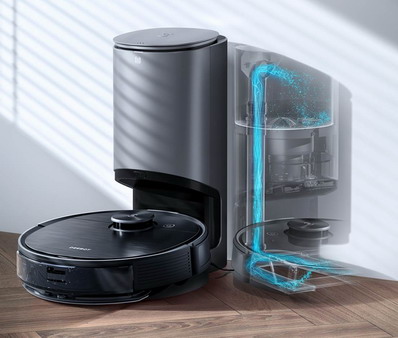NTC (Negative Temperature Coefficient) temperature sensors play a critical role in robotic vacuum cleaners by enabling real-time temperature monitoring and ensuring safe operation. Below are their specific applications and functions:
1. Battery Temperature Monitoring and Protection
- Scenario: Lithium-ion batteries may overheat during charging/discharging due to overcurrent, short circuits, or aging.
- Functions:
- Real-time monitoring of battery temperature triggers over-temperature protection (e.g., halting charging/discharging) to prevent thermal runaway, swelling, or fire.
- Optimizes charging strategies (e.g., adjusting current) via algorithms to extend battery lifespan.
- User Benefits: Enhances safety, prevents explosion risks, and prolongs battery life.
2. Motor Overheating Prevention
- Scenario: Motors (drive wheels, main/edge brushes, fans) may overheat during prolonged high-load operation.
- Functions:
- Monitors motor temperature and pauses operation or reduces power when thresholds are exceeded, resuming after cooling.
- Prevents motor burnout and reduces failure rates.
- User Benefits: Lowers maintenance costs and improves device durability.
3. Charging Dock Temperature Management
- Scenario: Poor contact at charging points or high ambient temperatures may cause abnormal heating in the charging dock.
- Functions:
- Detects temperature anomalies at charging contacts and cuts off power to prevent electric shocks or fires.
- Ensures safe and reliable charging.
- User Benefits: Mitigates charging hazards and safeguards household safety.
4. System Cooling and Stability Optimization
- Scenario: High-performance components (e.g., main control chips, circuit boards) may overheat during intensive tasks.
- Functions:
- Monitors motherboard temperature and activates cooling fans or reduces operating frequency.
- Prevents system crashes or lag, ensuring smooth operation.
- User Benefits: Improves operational fluency and minimizes unexpected interruptions.
5. Ambient Temperature Sensing and Obstacle Avoidance
- Scenario: Detects abnormally high temperatures in cleaning areas (e.g., near heaters or open flames).
- Functions:
- Marks high-temperature zones and avoids them to prevent heat damage.
- Advanced models may trigger smart home alerts (e.g., fire hazard detection).
- User Benefits: Enhances environmental adaptability and provides added safety.
Advantages of NTC Sensors
- Cost-Effective: More affordable than alternatives like PT100 sensors.
- Fast Response: Highly sensitive to temperature changes for real-time monitoring.
- Compact Size: Easily integrated into tight spaces (e.g., battery packs, motors).
- High Reliability: Simple structure with strong anti-interference capabilities.
Summary
NTC temperature sensors significantly improve the safety, stability, and longevity of robotic vacuum cleaners through multi-dimensional temperature monitoring. They are essential components for ensuring intelligent operation. When selecting a robotic vacuum cleaner, users should verify whether the product incorporates comprehensive temperature protection mechanisms to assess its reliability and safety.
Post time: Mar-25-2025


